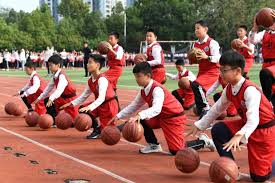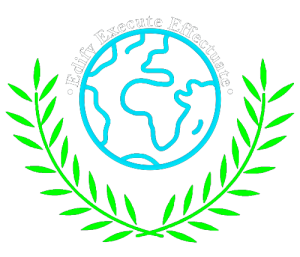By Vasundhra B
Introduction: China’s Plan for More Athletes
Chinese athletes have made remarkable achievements in the Olympics, improving their competitive edge over time after returning to compete from 1984 onward. Because of this, there are several reasons why China can generate more sportsmen; therefore, the factors contributing to this trend will be discussed in this paper. Initially, China’s sport growth was rooted upon international standing and national pride. Subsequently, purposefully targeted programs were launched by government officials aimed at nurturing athletic talents at all levels across the country.
To say the least, one of the major reasons for China’s successful sports is government support for sport development as can be seen from its Five-Year Plans. The most interesting aspect of this plan is that it focuses on both winning and social welfare in general within the period of 2021 to 2025. Apart from that, it has also promised finances totaling 23.3 billion yuan (around 3.2 billion dollars) towards renovating or building 2,000 exercise centres by 2025 which represent up to 38.5 percent of its overall budget. Primary events for instance the 2008 Beijing Olympic Games and Summer Universiade in Shanghai show how funds have been distributed among amateur and professional sports throughout the country. The comprehensive strategy therefore helps for China to be considered as a leading global power in sports while promoting health through physical exercise programs within an approximated number of 600,000 rural localities distributed throughout its territory.
Here’s a table showing China’s Olympic performance over the last 10 years:
| YEAR | TOTAL PARTICIPANTS | GOLD | SILVER | BRONZE |
| 2012 | 396 | 38 | 31 | 22 |
| 2016 | 412 | 51 | 21 | 18 |
| 2020 | 406 | 38 | 32 | 18 |
| 2024 | 388 | 40 | 27 | 24 |
Finding Young Sports Talents in China
The method used by China to identify young athletes is both thorough and systematic. Initially, the country has a plethora of sports institutions and specialised academies that are aimed at spotting and nurturing young athletes (Tan & Green, 2008). In addition, such institutions apply scientific approaches and standardised tests in evaluating physical characteristics, skills, and potential in different kinds of sports. Furthermore, in China, talent identification sometimes begins as early as kindergarten when physical education instructors are trained to recognize young promising sportsmen (Hong, 2004). Besides, the government has implemented initiatives like “Million Students Searching for Sports Talents” which aim to screen out many children with regards to athletic abilities (Wei et al., 2011). Therefore with time when these talents are recognized they are usually removed from their families to state-run training centres for intensive training. Additionally, it employs a pyramidal structure whereby it starts off with many young people who want to be athletes but end up only with outstanding individuals after a process of exhaustive selection (Houlihan & Green, 2008). There has been a shift in recent reforms towards combining sporting training with educational pursuits in view of earlier criticisms aimed at the system (Li et al., 2014). Consequently, promising young sportsmen and women can advance to state or national squads where they would acquire more specific training and resources. Finally, although this system has generated many Olympians, it has also attracted condemnation because of its severity and stress on children (Hong, 2004).
Balancing Schoolwork and Sports
The comprehensive approach of China towards sports development has been focused on harmonising academic pursuit with sports training. It has been suggested that incorporating sports into school systems can be useful because regular exercise can lead to better cognitive outcomes and improved academic performance (Zhang et al., 2023; Zheng et al., 2023). However, there have been criticisms against specialised training programs in these institutions for placing excessive demands on young athletes (Hong, 2004). To address this concern, recent reforms have aimed at striking a balance between sport development and education (Li et al., 2014). In the opinion of the Chinese government concerning sports public health, an essential aspect is education for athletes who perform well in class and (Dai & Menhas, 2020; Zhengtian & Shuting, 2024).
Results and Future of China’s School Sports Program
Today, given China’s aim of integrating sports into education, there has been a rise in significance accorded to sports. This has led to an amalgamation of both physiological enhancement and academic attainment which looks promising for the coming years. Some of these include “Sunshine Sports Programme”, “Specialised Football Programme” and “Campus Basketball Promotion Scheme .” Consequently, these programs have contributed to a more vibrant sporting culture within Chinese communities thereby increasing their physical fitness levels as well as cognitive functioning abilities (Zhang et al., 2023; Zheng et al., 2023). Another example is contests such as ‘National Youth Campus Games ’ or “Sports & Arts ‘2+1’ Project,” which pursue the ethos of holistic education that seeks to enhance global competitiveness in sports (Dai & Menhas, 2020; Zhengtian & Shuting, 2024). There are positive reasons for hope regarding school sport because stadiums indicate much investment in sports infrastructure, though it remains a challenge maintaining a balance between athlete training and academics. Nevertheless, much still needs to be done concerning high-training stressed syndrome which many young athletes suffer from (Hong, 2004; Li et al., 2014). Nonetheless, China’s strong commitment to creating a new generation of multi-sport athletes along with her inventive approaches render it the global champion in blending education with athletics.
To sum up, Chinese policies are intended to bring sports programs back in line with education in an attempt to achieve both sporting triumph and academic success. Comprehensive measures by the Chinese Government such as “Sunshine Sports Program” and dedicated schools for athletes have resulted in improved physical fitness levels and higher intellectual faculties among students. However, there have always been concerns over huge pressures on young athletes which recent reforms have tried addressing. Regardless, China still aims at raising rounded individuals through novel approaches that put it at the forefront of global endeavours for blending sports within educational systems.
References
Zhengtian, C., & Shuting, L. (2024). Reform and Optimization of Physical Education Teaching in Guangxi Private Universities During the 14th Five-year Plan. Uniglobal Journal of Social Sciences and Humanities, 3(2), 217-226.
Zheng, L. H., Zainal Abidin, N. E., Mohd Nor, M. N., Xu, Y. Y., & Feng, X. W. (2023). Sustainable coupling coordination and influencing factors of sports facilities construction and social economy development in China. Sustainability, 15(3), 2832.
Dai, J., & Menhas, R. (2020). Sustainable development goals, sports and physical activity: the localization of health-related sustainable development goals through sports in China: a narrative review. Risk management and healthcare policy, 1419-1430.
Zhang, Y., Yan, J., Jin, X., Yang, H., Zhang, Y., Ma, H., & Ma, R. (2023). Sports participation and academic performance in primary school: a cross-sectional study in Chinese children. International journal of environmental research and public health, 20(4), 3678.
Mao, L. L., & Zhang, J. (2012). Exploring the factors affecting the perceived program quality of international sports education programs: The case of a Chinese sports university. Journal of Applied Marketing Theory, 3(2), 2.
Zheng, W., Shen, H., Belhaidas, M. B., Zhao, Y., Wang, L., & Yan, J. (2023). The relationship between physical fitness and perceived well-being, motivation, and enjoyment in Chinese adolescents during physical education: a preliminary cross-sectional study. Children, 10(1), 111.
Hong, F. (2004). Innocence lost: Child athletes in China. Sport in Society, 7(3), 338-354.
Houlihan, B., & Green, M. (2008). Comparative elite sport development: Systems, structures and public policy. Elsevier.
Li, C., Wang, C. K. J., & Pyun, D. Y. (2014). Talent development environmental factors in sport: A review and taxonomic classification. Quest, 66(4), 433-447.
Tan, T. C., & Green, M. (2008). Analysing China’s drive for Olympic success in 2008. The International Journal of the History of Sport, 25(3), 314-338.
Wei, F., Hong, F., & Zhouxiang, L. (2011). Chinese state sports policy: Pre-and post-Beijing 2008. The International Journal of the History of Sport, 27(14-15), 2380-2402.





